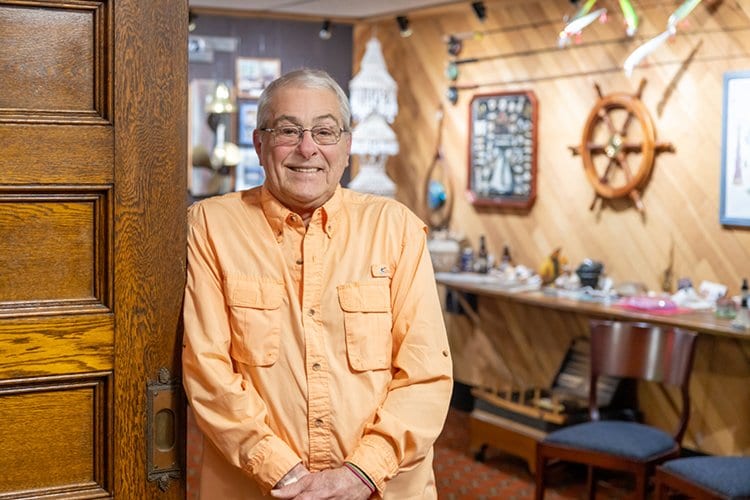Thankful for World-Class Heart Care Close to Home

Husband, Avid Boater and Fisherman, TAVR Patient
“What didn’t concern me was the procedure or the doctors who would be performing it. My wife and I had been to the Heart and Vascular Center when it first opened, and we were so impressed.”
When Midland resident Lawrence Kempl, 84, received his aortic stenosis diagnosis, he knew he would be in good hands with his cardiology team at MyMichigan Health’s Heart and Vascular Center. Aortic Stenosis (AS) is a disease which causes the opening of the heart’s aortic valve to become narrowed. Under this condition, the heart must work harder to pump blood to the aorta. Sometimes, symptoms of the disease such as feeling tired or being short of breath, are often mistaken for being a part of the normal aging process, particularly in an otherwise healthy person.
Kempl has always enjoyed staying active and busy outside in the wooded area around his home. Over time he began to notice that he was feeling tired more quickly than normal, however subsequent blood work and testing appeared to be normal. But his ongoing exhaustion after simple tasks alerted Cardiologist Waleed Doghmi, M.D., to a potential diagnosis of AS.
“I have to say, when I learned about my condition and the possible seriousness of it, I was concerned,” said Kempl. “What didn’t concern me was the procedure or the doctors who would be performing it. My wife, Loretta, and I had been to the Heart and Vascular Center when it first opened, and we were so impressed by it. I had a stress test there and the staff were wonderful. It’s obvious that it’s a state-of-the-art facility and having access to this level of heart care so close to our home is a great asset.”
Dr. Doghmi referred Kempl to Interventional Cardiologist Andrzej Boguszewski, M.D. Dr. Boguszewski told Kempl he was a good candidate for a transcatheter aortic valve replacement (TAVR) to treat his AS. He explained that an artificial aortic valve would be inserted through an artery in the neck, leg or between the ribs, and placed inside the diseased valve while the heart was still beating. This approach is less invasive than surgery and is proven to consistently lengthen a patient’s life and improve their overall quality of life. It didn’t take long for he and Loretta to agree that this procedure was a good idea.
“I went in for my procedure in the morning and was back home the next afternoon. It was amazing,” said Kempl. “I would rather have another TAVR than go to the dentist.”
Kempl was informed that it would take some time for his body to fully acclimate, but in just four weeks he was already feeling better. He worked with the staff at MyMichigan’s Cardiac Rehabilitation Program to regain his strength and is committed to continuing his exercises at home. “The staff there is tremendous,” said Kempl. “I saw them interact with many clients, and they were focused on each one, working with each of us as individuals.”
Now, Kempl is feeling energic again and is back to enjoying all of the activities he loves. He and his wife are grateful that they didn’t have to travel far for world-class heart care.
Those who would like more information about TAVR and MyMichigan’s Structural Heart Clinic may visit www.mymichigan.org/structuralheart.